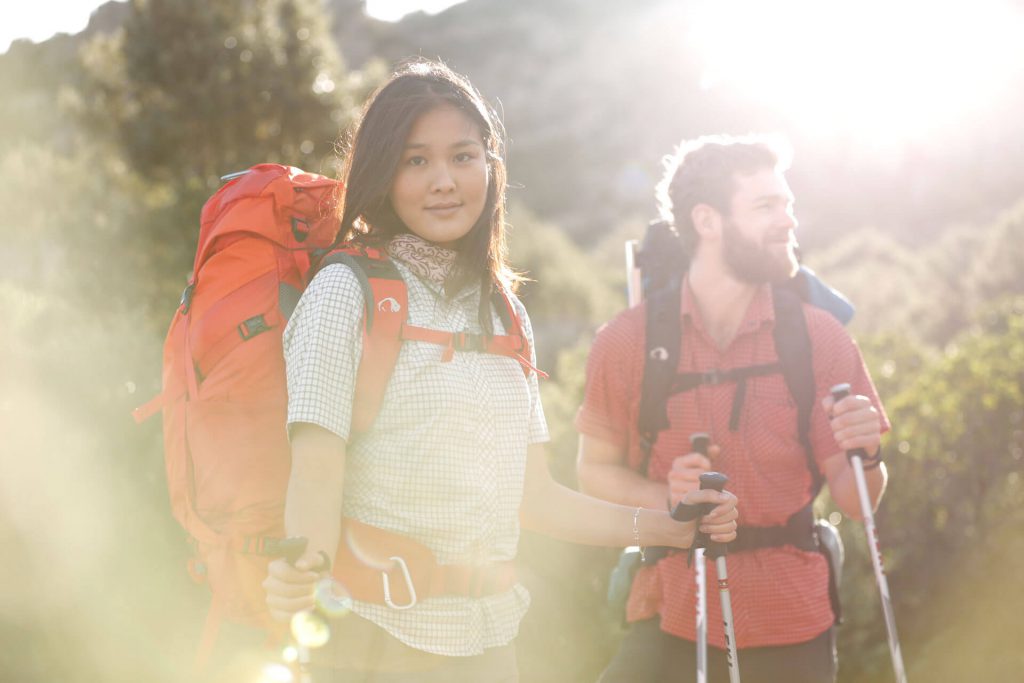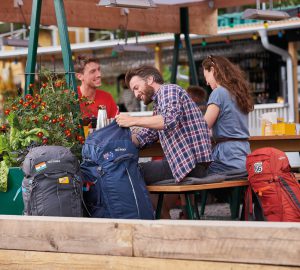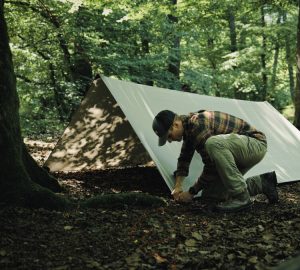It is no secret that the female and the male physique differ. But the anatomical differences might impact on the fit of backpacks. We are frequently asked, which backpacks suit the female body and what to keep in mind buying a women’s backpack. This is why we like to explain the peculiarities of backpacks for ladies and provide assistance to make your buying decision easier.
What are the peculiarities of a women’s backpack?
As women have a different frame than men, there are rucksacks especially made to suit the female anatomy. Particularly when it comes to touring or trekking backpacks, the models for ladies differ from unisex models in major aspects, whereas smaller women’s backpacks, like hiking backpacks, bike backpacks or daypacks, usually just have differently shaped shoulder straps. The following points make bigger rucksack for ladies so special:
- The back is shorter: As most women are smaller than men, the backpack’s back is a little shorter, to correctly position the hip belt. A trekking or touring backpack should always match your height. Due to an adjustable back system the exact back length can be justified: The hip belt is supposed to seat on the hip bones to derive the load optimally to the pelvic-area. As the unisex models also come with an adjustable back system, the women’s backpack’s packing volume is lower.
- The back is narrower: As the female back is narrower than the male one, the women’s backpacks are also narrower, to avoid the rucksack from protruding – especially when hiking in the forest, this can be a huge advantage.
- The hip belts are shaped more conically: In contrast to men, women have a relatively broad pelvis and a slim waist. As the hip belts derive part of the load to the pelvic-area, they are tailored to these circumstances. They are well padded to not pinch on the hip and pelvic bones. Also, they are (watched from ahead) curved more inwardly, (which is called shaped more conically) to perfectly abut on the pelvis.
- The shoulder straps are more curved: As the shoulder straps should lead past the breast but should not rub against the arm, they are more curved and usually narrower for women’s backpacks. Additionally you should make sure that the breast strap does not hurt – ideally it sits above the breast. For optimum adaption it is height-adjustable.
When to choose a women’s backpack?
Of course not all women are built equally. For that reason the perfect fit depends on the individual physique. So, not every female has to get a ladies’ backpack. Models that are not exclusively made for women may also suit. The individual fit counts more than the label. Before purchasing it is recommended to try the rucksack on, with a realistic load. Not every model suits every frame and a women’s backpack may also suit a narrow or small man – do not be afraid of the term.

What else to consider?
Besides the individual physique, it is important to consider the backpack’s supposed operating range. For different outdoor activities it is sensible to use different backpack models – and usually there are also versions for ladies: a hiking backpack for little excursions, a touring backpack for hut tours, a trekking backpack for trekking or backpacking tours with a lot of luggage or a climbing rucksack for climbing adventures.
Good to know: Systematic carrying – how to pack backpacks properly
Anything else to consider, when buying a backpack?
Before purchasing a rucksack, you should be sure about its purpose. If this question is answered, the most important factors are the fit and the carrying comfort (even with maximum load). Depending on the physique, there are different backpack models to be taken into account. Being a woman does not mean only a women’s backpack offers optimum fit, while being a (little or narrow) man does not mean only a unisex model suits. It is especially important, that the backpack does not rub against your body or protrudes. Furthermore, the carrying system should suit the length of your back, particularly when it comes to touring or trekking backpacks: in these cases an adjustable, high quality-back system is a must.
Also interesting: Basic outdoor knowledge: Must haves on tour and knowing the ropes during thunder storms and emergencies







